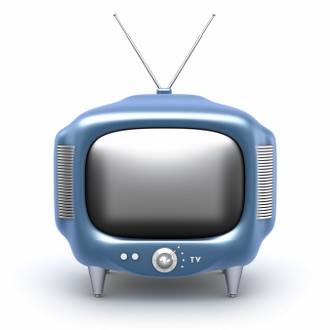Why are there so many different types of TV antenna?
Index
There is a range of different types of TV antenna, each suited to a different purpose. It is important to know the differences so that you when you do get an antenna installation in your house, you get a television antenna that best suits your needs.

One type, that is not truly a type, is "HDTV" antenna. This is a marketing ploy used to sell antennas, when there is in fact no difference between a digital TV antenna and a HDTV one. There may be a difference between a digital antenna and an analogue one, but again that is a misnomer. The difference between the antennae is more one of channel frequency, rather than an actual difference in the type of signals it can detect.
Dipole Antenna
This is the simplest type of TV aerial. Most people know of the "rabbit ears" type of antenna – this is a type of dipole antenna. There are also bowtie dipoles (which increases the bandwidth), folded dipoles (which increases efficiency) and loop dipoles (which is similar to the folded). Dipole antennae are bi-directional, which means they receive signals equally from the front and back. They are also very cheap, which is why they are common. However, being bi-directional makes these aerials less efficient compared to other antennae, which usually maximise signal from a narrower angle and one direction. They are also typically used closer to the ground and indoors, usually resulting in a much poorer result than rooftop antennae.
Stacked Dipole Antenna
Dipole antennae may be stacked together in order to increase the gain of the antenna as a whole. That is, it can collect more energy and therefore is able to detect much weaker signals.
Log-Periodic Dipole Array (LPDA) Antenna
The Log-Periodic Dipole Array antenna involves several dipoles arranged to make a very wideband antenna. The name originates in the arrangement, in that the dipoles gradually get larger by a logarithmic scale. These are usually large TV antennae, generally used to pick up VHF TV signals. The Vee type, as opposed to the straight type, has a slightly higher gain for some channels, but straight shaped LPDA antennae are better at cancelling out interference.
Reflector Antenna
The reflector antenna is a very common type. What most people would know as a "satellite dish" is in fact a type of reflector antenna. Radio signals will reflect from a large conducting plane much like a mirror. There are a few different types, each with different benefits. The double-bowtie version, using two dipole bowties, will have a good bandwidth, though the gain of the signal depends on the screen size. A curved parabolic reflector will focus the signal onto a single dipole, which increases the gain but does sacrifice some of the bandwidth. Corner reflectors, that use two flat surfaces to focus the signal, increases your bandwidth, but deteriorates the gain slightly, though it has the gain of approximately three dipoles. It is a good "medium gain" antenna, largely used for UHF. >Lastly, there is the paraboloid reflector, which is commonly known as a satellite dish. These give you enormous gain and generally are used to pick up signals from satellites. These are much larger and clunkier than other antenna types.
Yagi Antenna
The arrangement of a Yagi antenna is most favoured in the modern world. This television antenna design involves several different elements that are arranged in echelon and connected by a boom. The longest element at the end is called the reflector. The next element is the driven element. The rest of the elements are called directors. The Yagi antenna is usually intended for only one frequency. It is known as a narrowband antenna. The gain will drop off quickly as the frequency moves away from the design limit. However, what is so beneficial about this design is that you can increase the gain of the antenna by increasing the number of directors. You can also increase the bandwidth by sizing the reflector for the lowest frequency, and the directors to the highest frequency of the band. You could also increase the bandwidth by replacing the reflector element with a corner-reflector assembly.
Different antennae have developed for different uses over the years. If you are still baffled about which TV antenna is best for your situation, you should contact a specialist to find out more.
